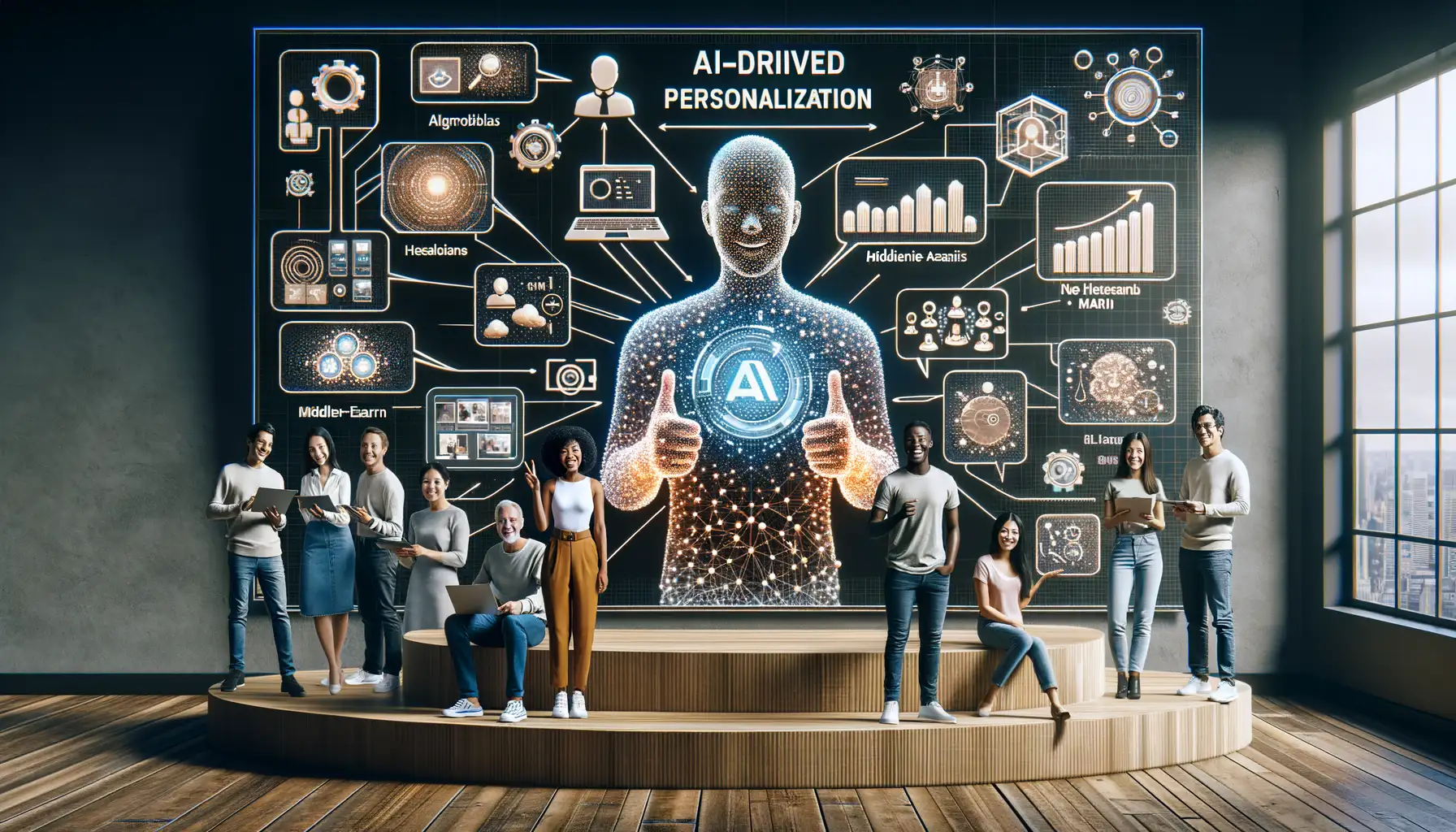Understanding the Role of AI in Mobile App Personalization
How AI Gets to Know You Through Your Smartphone
Picture this: your mobile app feels like it’s reading your mind. You open a shopping app, and boom—there’s the jacket you were daydreaming about yesterday. That’s not magic; it’s AI-driven personalization in action.
AI works tirelessly behind the scenes, analyzing tiny breadcrumbs of data you leave behind. Every tap, swipe, and purchase isn’t just an action—it’s a clue. Using advanced algorithms, AI can predict what you’ll need next, whether it’s suggesting songs that match your late-night mood or offering fitness tips right after your morning run.
What makes it so smart? It learns. And the more it learns, the better it gets at speaking directly to *you.* Apps aren’t treating users as a faceless crowd anymore; they’re personalizing down to what feels like a one-on-one conversation.
- Behavioral analysis: How often do you use the app and where do you linger?
- Contextual understanding: What time is it? Where are you? What might you need right now?
- Pattern recognition: What have users like you shown interest in?
The takeaway? AI transforms apps from tools into companions. It’s almost… human.
Techniques for Implementing AI in Niche Market Apps

Unlocking AI-Driven Personalization for Niche App Success
Let’s talk about turning your niche app into something users can’t stop raving about. The secret sauce? Artificial Intelligence tailored to their needs. But how do you make this magic happen in practice? Spoiler alert: it’s not just about throwing in some fancy algorithms and hoping for the best!
The first step is understanding your app’s heartbeat—the data. From fitness tracking for aerial yoga enthusiasts to language apps for Middle Earth fans learning Elvish, every niche has unique user behaviors. AI thrives on this specificity. Tools like Natural Language Processing (NLP) can analyze patterns in user communication or feedback to deliver hyper-relevant content suggestions. Think curated meal plans for vegan bodybuilders or meditation guides for stressed-out gamers.
- Use machine learning to predict what users will love next based on their clicks, swipes, or even pauses.
- Train recommendation engines that dig into micro-preferences—like a playlist app that suggests songs not just by genre but by emotional tone.
Next, don’t overlook visual personalization! Ever noticed how Instagram’s explore tab feels like your personal mood board? Incorporate AI-powered image recognition to tweak what appears in your app’s interface, aligning products, visuals, or options with user aesthetics.
Finally, remember that smaller markets demand bigger attention to detail. Build trust through transparent AI. Let users know WHY that suggestion popped up. Trust me, humans love a good explanation.
Key Benefits of AI-Driven Personalization for Users

Why AI Personalization Feels Like Being Understood at Last
Imagine opening an app and feeling like it “just gets you.” That’s the magic of AI-driven personalization. Suddenly, your experience isn’t generic—it’s yours. By analyzing your habits, preferences, and even the smallest quirks, AI creates a tailor-made journey that feels like having your own digital concierge.
For instance, a fitness app could nudge you with reminders that align with your morning jog routine or suggest workout plans based on your performance. Or, think about a language learning app that asks, “Hey, are you struggling with verb conjugations?” How did it know? Because AI is paying attention, but not in the creepy way—more like a thoughtful friend who always remembers how you take your coffee.
- Zero clutter: Forget irrelevant notifications and useless content. Everything AI shows you is fine-tuned for your needs.
- Time-saving magic: No more endless scrolling. Apps bring what you need to the surface, pronto.
- Unparalleled engagement: The more you connect, the smarter the suggestions become—and the less you can put the app down.
It’s Not Just Convenience—It’s Connection
On a deeper level, AI-driven personalization fosters emotional loyalty. Whether it’s tailoring a shopping app to your ethical values (“Cruelty-free products only, please!”) or recommending books that perfectly match your taste, it feels like someone’s genuinely paying attention. And in a busy, noisy digital world, isn’t that a little bit priceless?
Challenges of Using AI for Personalization in Niche Markets

Why AI Struggles to Nail Personalization in Niche Apps
When it comes to personalization in niche markets, AI is like a chef experimenting with a mystery box challenge. It has incredible tools at its disposal but often lacks the perfect ingredients to whip up a winning dish. Why? Because niche markets are anything but predictable.
First off, there’s the issue of data scarcity. Unlike mainstream markets swimming in oceans of user input, niche apps often deal with puddles of information. This makes it tough for AI systems to learn and adapt effectively, leading to personalization that feels more cookie-cutter than bespoke.
Secondly, understanding the unique behaviors of a tight-knit audience isn’t straightforward. For instance:
- How do you predict the preferences of a vintage vinyl collector on a music app?
- What about tailoring content for ultramarathon runners planning their next 100-mile race?
These users demand hyper-specific solutions, and let’s face it: even AI stumbles when the expectations are sky-high.
Lastly, there’s the question of trust. Many niche audiences are deeply passionate and wary of algorithms. They don’t want a robotic experience — they crave genuine connection, which can make automating personalization feel like walking a tightrope.
Future Trends and Opportunities in AI-Driven App Personalization

Pioneering Beyond Predictability: What’s Next for AI Personalization?
The future of AI-driven app personalization is nothing short of exhilarating. Imagine apps that don’t just *respond* to your behavior but almost seem to *anticipate* your desires—before you even realize them yourself. That’s where we’re heading. Fueled by advancements in machine learning and real-time data processing, the possibilities are endless.
What about hyper-contextual personalization? Picture a fitness app that adjusts not only based on your workout history but also on the weather outside, your stress levels (tracked by wearables), or even the time of day. Or a shopping app offering product recommendations tailored to your sustainability preferences and local trends visible in your neighborhood. These aren’t pipedreams—they’re on the horizon.
- Sentient UX Design: Interfaces that morph and shift dynamically to fit individual user journeys.
- Voice and Emotion Recognition: Apps adapting their tone and functionality based on how you “sound” right now.
- Collaborative AI: Systems that interface with multiple apps, creating a web of deeply personalized experiences.
With every swipe, click, and pause, AI personalization continues to transform from reactive to proactive, forging connections between users and apps that feel almost… human.
